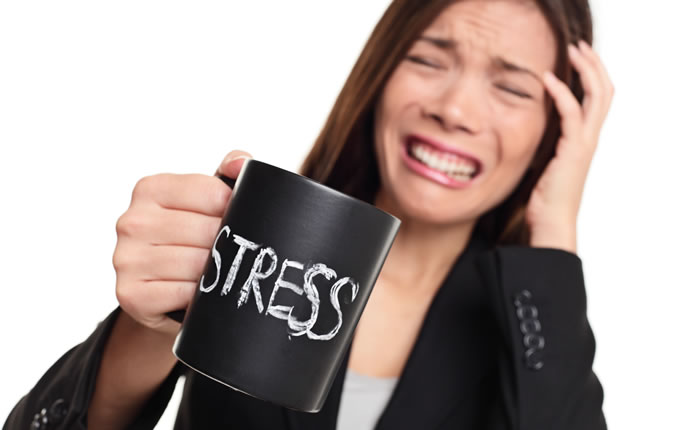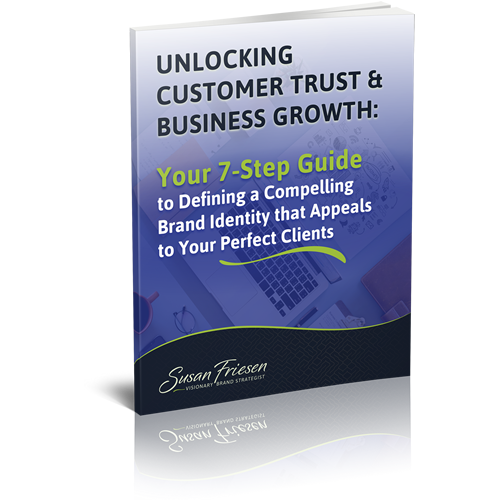It’s just another normal day, right?
You awaken one morning and discover that someone drank the last of the milk and the cereal you were planning for breakfast has now been switched to a quick piece of toast – and you’re all out of your favorite jelly.
Muttering, you head to your car, but not before your partner reminds you that you agreed to pick up the kids today from soccer practice. She/he must work overtime to make up for the missed ½ day last week when the dog had an emergency and had to go to the vet.
 You grudgingly agree, knowing that in the process your answer was a little harsher than you intended.
You grudgingly agree, knowing that in the process your answer was a little harsher than you intended.
Just as you get into your car, you remember you had planned to leave earlier today to buy gas. As you pull into the gas station, you realize that gas prices have jumped 10¢ a gallon. Frustrated, you fill up and head to work, only to sit in stop and go traffic with about another million drivers headed in the same direction.
You reach for your car radio switch, when suddenly the car in front of you brakes, causing you to come within 1-inch of a rear end collision. Your purse, once on the front seat, is now under the pile of papers that you had taken home to work on. You tell yourself to stay calm, but you’re feeling a little unsteady from the near miss.
You arrive at work and are immediately told to report to your manager. Your best customer has phoned in with a complaint and the deal you thought was a sure thing is in jeopardy. And somehow you get the feeling that your job is at risk, too.
You promise to address the issue immediately, but when you sit down at your computer an alert message appears stating that the system is being checked for a virus and won’t be available for another hour. You head begins to hurt and that nagging pain in your back won’t go away. On your way to get some water so that you can take a pain reliever, you run into your good friend, Elizabeth who is obviously on the verge of tears.
You know something is wrong, but have an intense desire to run the other way. You can’t deal with another catastrophe right this minute.
Does this sound like a variation of more days than you’d like to admit? Whether you realize it or not, you have dealt with stress all morning long, and if you do not do something to re-group, you are at risk for something far worse.
Stress 101
For an easy-to-understand primer on the stress crisis afflicting the modern man, modern woman, and yes, even the modern child, let’s begin with a brief lesson called Stress 101.
Everyone has a level of energy that is “normal” for them. The energy level of healthy people can range from rather low to rather high. If it is too low, a medical condition such as low blood pressure, low thyroid, or depression may be culprit.
If your energy level is excessively high, you could be experiencing hyper-activity or some other physical or behavioral disorder. But let’s agree that for most of us, we move through life with a rather stable energy level.
Here’s how it is intended to work
- When an event happens that causes you to expend more energy you experience stress.
- A certain level of stress is good for you. This is called eustress or productive tension. At this stage, hormones are released into the body to give you an energy boost.
- These hormones enable your “fight” or “flight” reaction.
- After you have expended the energy, you need to move below your normal stress level so that your nervous system can return to normal and the “energy” hormones can dissipate and not be stored in the body. Your body is then able to return to a normal energy level and ready for the next stressor in life.
But, here’s what happens in the real world:
- An event occurs that causes your energy level to go up.
- Your hormones kick in and you respond to the stressor (eustress or productive tension).
- After the response, your body wants to go to a calming place. However, before you can ever get to the place of normal energy, you probably experience another stressor.
- Your body responds by another release of energy (more hormones kick in)
- You react to that event.
- And again, there is a desire to return to a lower level of energy.
- And before that happens, you have another stressor.
- Before you know it, you are operating above the productive tension line and operating at a distress level
As you can see, your energy level (and hormonal level) remains escalated. And although your energy level will slow down (often resulting in exhaustion), your hormonal production continues. This results in distress and disease.
Acute and Chronic Stress
Two of the most common types of stress are acute (sudden) or chronic (on-going).
Acute stress is a reaction to an immediate, unexpected stressor, like:
- Seeing a child run into a busy street
- Hearing a loud noise behind you (or even in front of you)
- A phone call telling you of an emergency
- Being unexpectedly called on to speak
- Your child throwing a temper tantrum in front of others
- A very verbal, highly irritated customer
- Being pulled out of the airport security line for extensive screening
- Learning that you have no credit left on your credit card
- A new romantic interest walking into a party unexpected
- Winning the lottery
- Waiting for the final free throw of a basketball game when the score is tied
During acute stress, the unexpected event occurs, you have the appropriate hormonal response, you respond at a higher energy level, and then when the crisis is over, you seek out the first chance you can to relax.
The body can deal with acute stress in small doses. Prolonged bouts of acute stress are very taxing and wearing on the body, rational thinking often becomes distorted thinking, and the rate of accidents and mistakes increases.
Chronic Stress is prolonged stress. There seems to be no light at the end of the tunnel. You don’t feel any hope for the future and feel that you have no power over the situation. And feeling powerless to impact the situation resonates deeply. Some situations that produce chronic stress are:
- Being homeless
- No perceived power in relationships or job
- Dysfunctional families
- Trapped in a despised job or career
For most people, though, chronic stress is more often a product of:
- Too much to do, too many commitments
- Working in a job we don’t like
- Working longer hours on the job with little or no reward
- Too little sleep
- Disorganization in our living and work environments
- Financial problems without a solution in sight
- Fear of losing a job
- Prolonged illness (yours or a family member’s)
Stress Management Techniques
This background information is intended to raise your awareness about the costly effects of stress. Costs to your health, your relationships, and your personal well-being. It is more important now than ever that individuals do whatever it takes to carve out time to engage in stress reducing activities.
The best way to manage stress is to make time every single day to relax, refresh and re-energize. Although you might join a class to help you learn some relaxation techniques, chances are that making it to class will add even more stress.
The following techniques will help reduce stress, help your body (and mind) find calm and restore your energy. When practiced on a regular basis, you give your body a rest as your hormonal levels return to normal. You, in turn, will be better equipped for managing the
day-to- day stressors that are bound to come your way.
Breathing Technique: The great thing about this exercise is that it can be practiced anywhere, anytime. In fact, some clients tell us that this technique is one they practice prior to starting their day and/or as a bedtime ritual.
It is also beneficial for the transitional times – before going into your home after a day of work, before entering a meeting that may be controversial, before heading out to the golf course or meeting friends for dinner.
Breathing deeply can require conscious attention since we tend to breathe shallowly most of the time. Here is a simple way to practice.
Mindfulness: If you have ever arrived somewhere and not remembered the trip or after an event, you can’t even remember who was there (or what they were wearing, or what they talked about), you will benefit from practicing mindfulness.
Mindfulness is a technique where give full attention to your feelings, thoughts, and sensations. You literally live in the moment and experience the sensations of the moment. This exercise takes very little time, but the benefits are tremendous.
Studies have shown that people who practice mindfulness have less pain and more quickly recover from injuries and illness than people who do not.
Self-Talk: Self talk is exactly what the term implies. It is the thousands of messages that we tell ourselves every day. Self-talk is about judgment. Judging ourselves and judging others.
Control vs. No Control: Let’s face it, you have control over two things: Your own thoughts and your own behavior. Understanding where you clearly have control can be strengthening. Here’s an example:
You are in the office and someone approaches you with a bit of gossip about a co-worker, Michelle. The gossip includes some rather harsh remarks about something you are passionate about. Michelle has decided that she will not support the annual United Way drive because her time and money are devoted to juvenile diabetes. You might become defensive, antagonistic toward her, and begin forming alliances with others who share your conviction. The truth of the matter is that you have no control over what Michelle values. What you can do is enthusiastically support your cause and have respect for Michelle and her cause.
Another example of control awareness might go something like this. You arrive home from work and realize that the sanitation department did not pick up your overflowing trash container that morning as planned. You can either: 1) fuss and fume, call the city, leave a scathing message, and threaten to leave your trash curbside until someone picks it up. Or 2) you can recognize that the trash was overlooked, call and ask what your next steps should be. Should you leave the trash curbside, or should you roll the container back into your garage? You have no control over the fact that the trash was not collected. What you can control is your response.
The question to ask yourself is this? Do I have any control over this situation? If I do, what are the rational steps I can take to resolve it? If not, am I willing to let it go? This practice in and of itself will reduce most people’s stress level by half.
Lifestyle Changes: Let’s be honest. Much of the stress we experience is a result of choices we make and lifestyles that we lead. The following ideas are beneficial to all people who want to reduce the amount of stress in their life and live healthier:
- Organize your living and work space – by doing this, you spend less time searching for things. An organized space is more calming than clutter.
- Organize your time. You only have so much time. By organizing your time, you will be able to spend it on things that are of greatest importance to you.
- Cultivate a supportive social circle. Research tells us that surrounding ourselves with people who support us and whom we support leads to healthier – and even longer lives.
- Take care of your body. Day-to-day stress and day-to-day living take a toll on your body. By engaging in regular exercise, your body is stronger, your stress is lessened and your health increases.
- Renew your spirit. The old saying that “attitude is everything” has validity. Reading, vacation, creative activities, journaling, meditating, praying, and experiencing a higher source of power are all ways to renew your spirit.
These techniques are lifestyle changes that create a more calming environment. Instead of depleting you of energy, these choices restore your energy.
Closing Thoughts
Cari Harness once said, “Give your stress wings and let it fly away.” Let’s face it – that is easier said than done. Maybe a more realistic approach is to look at the situations in your life that you can control and can’t control. Give wings to the ones you can’t control and let them go. Just.let.them.go!
What you can control is your long-term response to the stressful events. You also control whether you practice calming techniques. And there are plenty of lifestyle choices that you control.
Perhaps you could start right now by breathing slowly, being mindful of the things around you, creating positive self-talk and watch your stress fly away.







